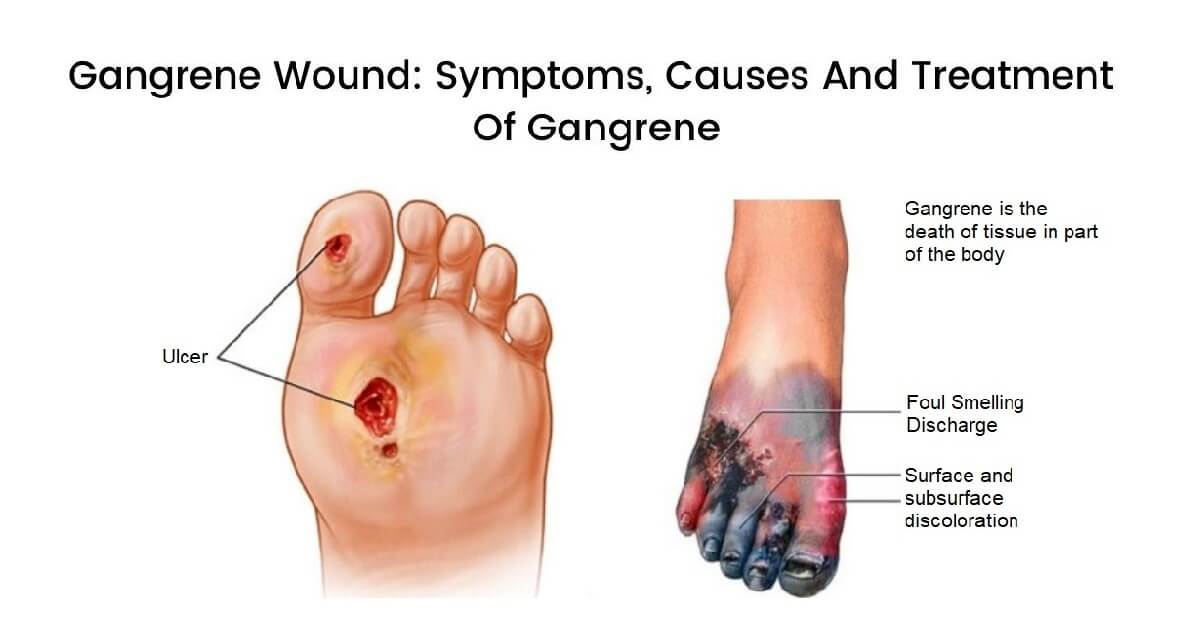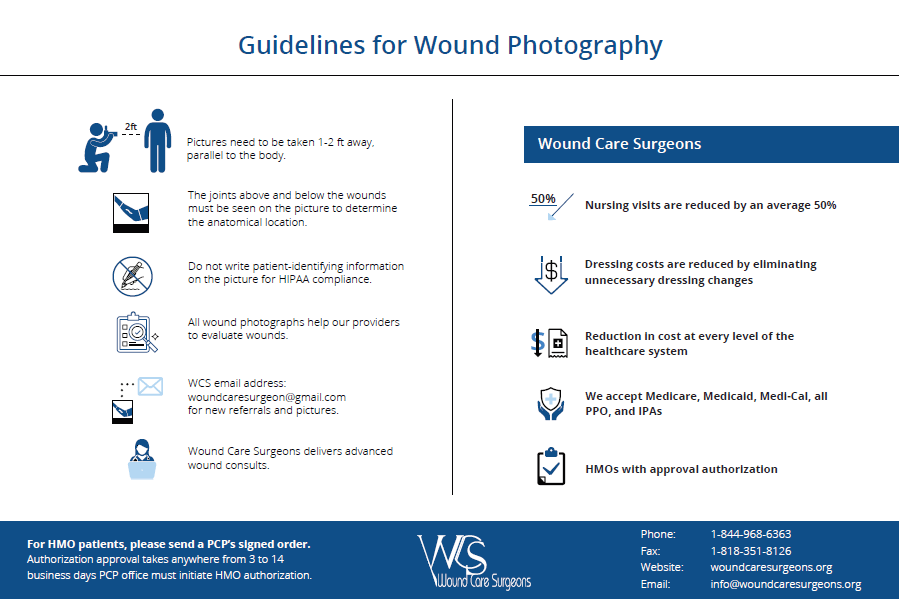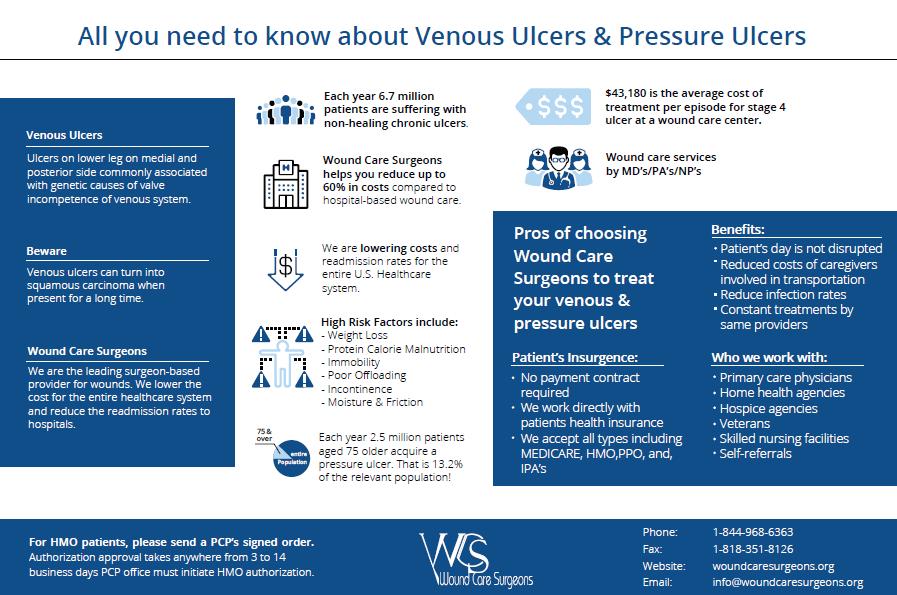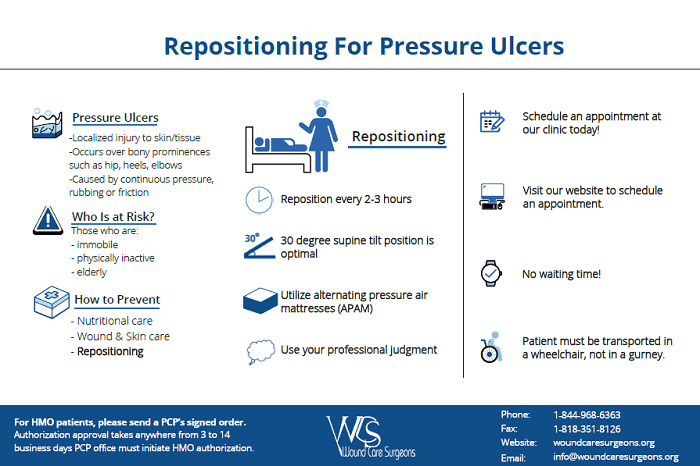
What is Gangrene?
Gangrene is a serious medical condition that occurs when the body tissue dies due to insufficient blood flow, injury, or a severe bacterial infection. It usually occurs in extremities like fingers, toes, and limbs but it can also develop in the muscles and organs inside the body such as the gallbladder. The patient is more prone to develop gangrene if they have an underlying medical condition such as diabetes or hardened arteries. Recognizing and treating gangrene on a prompt basis will improve a patient's health otherwise it could lead to amputation or death etc.
Types of Gangrene
There are different types of gangrene each of which needs proper palliative care for gangrene & attention by a qualified and expert team of doctors and nurses at healthcare facilities.
1. Dry Gangrene - This type of gangrene is recognizable through dry and shriveled skin that has a brown or purplish-blue or black appearance. It occurs in people with vascular disease, diabetes, and autoimmune disease, etc. It may develop slowly and affects your hands & feet due to improper blood circulation to a certain area. If it gets infected, dry gangrene can turn into wet gangrene.
2. Wet Gangrene - This type of gangrene occurs due to the infected body tissues with some kind of bacteria. Wounds like burns or trauma where a body part is crushed or squeezed can cause an improper blood supply to the area, lead to dead tissue and develop the signs of infection. This is a more severe case than dry gangrene as the infection can spread to other parts of the body. People with diabetes are more prone to develop gangrene.
3. Gas Gangrene - This type of gangrene has adverse effects on deep muscle tissues while in the initial stage, the surface of the skin may have a normal appearance at first glance. It occurs when there is an infection deep inside of the body such as inside muscles and organs usually due to trauma. This type of gangrene can be fatal.
4. Internal gangrene - This gangrene affects internal organs and is commonly related to an infected organ such as appendix or colon etc. It requires an operation by the Wound Care Experts to remove the gangrene tissue. It occurs when the blood flow to an internal organ becomes blocked such as intestines, gallbladder or appendix, etc.
5. Fournier’s Gangrene - It is a rare gangrene condition that is caused by an infection in the genital area and affects men compared to women. If there is an infection, it can lead to a condition called sepsis which can be life-threatening.
6. Meleney's Gangrene - It is also known as progressive bacterial synergistic gangrene which is generally a complication of surgery. People suffering from this type of gangrene can experience painful skin lesions within one or two weeks after the operation.
Symptoms of Gangrene
Gangrene affects the skin while the symptoms depend on its location and cause. Dry gangrene generally starts with a red line around the affected area which then turns dry and black.
Here are the symptoms of gangrene:
1. Change in the color of the skin ranging from pale to blue, purple, black, bronze, or red. It depends on the type of gangrene
2. The affected area can feel cold and numb to touch
3. Swelling
4. Blisters
5. Shock
6. Pain in or around the affected area
7. Bad smelling discharge leaking from a sore
8. Thin skin or skin without hair
9. Redness
10. Sudden fever with a temperature higher than 100.4°F etc.
If the patient is suffering from gas gangrene or internal gangrene, he can also feel a low-grade fever. In case of septic shock, the signs can include:
1. Low blood pressure
2. Fever
3. Faster heart rates
4. Shortness of breath
5. Lightheadedness etc
If a patient notices any of these symptoms, he should seek immediate help from doctors for suitable gangrene wound dressing and treatment.
Causes of Gangrene
Gangrene occurs when there is a blockage of blood supply to certain tissues. This can happen to:
1. An infection
2. An injury such as burn or combat wound
3. Any chronic disease
4. Lack of blood supply
5. Trauma
6. Poor wound healing
7. Diseases like diabetes mellitus can affect blood vessels (usually arteries)
Risk Factors Of Gangrene
A patient is more likely to develop gangrene if there is a history of medical conditions including:
1. Diabetes
2. Blood vessel disease
3. Any severe injury or surgery
4. Smoking
5. Obesity
6. Peripheral artery disease
7. Narrowed arteries (atherosclerosis)
8. Poor immune system
9. Complications of COVID-19
10. Blood clots
11. Hernia
12. Appendicitis etc.
Some other conditions that can increase the risks of gangrene are:
1. Any recent surgery
2. Animal bite or severe burn
3. An injury that caused crushed body tissues
4. An injection of promethazine hydrochloride etc.
Diagnosis of Gangrene
If any patient has symptoms of gangrene, the team of Wound Care Surgeons may ask them to take a physical exam to recognize any signs of dead tissue. They may also check if the patient has any chronic health conditions that could be linked to gangrene. The healthcare provider may also want the patient to go through some tests for gangrene such as:
1. Blood Tests - An unusual growth in the white blood cells can indicate a severe infection.
2. Imaging Tests - Some types of imaging can help diagnose the spread of gangrene in internal tissues. These tests include X-rays, MRI scans, or CT scans, etc. It will help the medical team know whether the gangrene has spread or if the gas has accumulated in the tissues.
3. Surgery - The surgery is done to confirm if there is internal gangrene or not.
4. Lab Analysis - The scraping of tissue from the affected body part may be examined by the doctor with a microscope to recognize any dead tissues.
Treatment of Gangrene
The treatment of all types of bedsores gangrene includes the process of removing dead tissue, treating and preventing if there is any type of infection along with the condition that caused the gangrene.
Depending on the type of gangrene, the treatment includes:
1. Surgery - This is also known as tissue debridement where the dead tissue or body part is removed to prevent the infection from spreading. It might also lead to amputation of an affected limb, finger or toe, etc.
2. Hyperbaric Oxygen Chamber - A person with gas gangrene is placed in a special oxygen-rich chamber that slows the growth of the bacteria. It also provides oxygen to the damaged tissue to ensure healing
3. Antibiotics - The patients may get antibiotics through a needle to treat or prevent infection.
Prevention of Gangrene
Here are a few tips that can help patients to reduce the risks of developing gangrene. Here they are as follows:
1. Maintain sugar level if the patient has diabetes and look for any type of injuries (cuts, sores) or infections like redness, swelling or drainage, etc.
2. Exercise daily to reduce weight
3. Stop consuming tobacco
4. Stay warm etc.
Gangrene can lead to severe conditions if not treated on time. Infection can spread to other tissues and organs. The patients need to contact Wound Care Specialists if you have persistent, or unusual pain in an area of the body.



